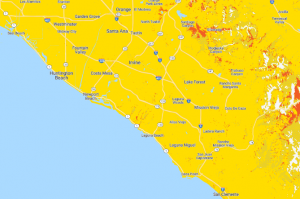IMPORTANT INFO: Updated T-Mobile Cost Reimbursement Rate Schedule to Include New Fee for Timing Advance Records
As of May 20, 2022, T-Mobile updated their Cost Reimbursement Rate Schedule, which reflects adjusted pricing on some already charged for services, but this form now has a new service type reimbursement rate not seen in the past, that frankly is rather troubling.
Timing Advance (TDOA/PCMD) record requests will now require submission of their Timing Advance Billing Request Form, which requires ones agreement and consent to be charged $25 per target phone number, no matter if they have responsive records or not.
T-Mobile is claiming the request for historical Timing Advance (TDOA) records from their timing advance system in response to a search warrant or probable cause order is “burdensome and involves large amounts of information”. They also claim these fees are associated with the “time and technology used to provide the response, not the production of the records.”
T-Mobile is saying they will not provide Timing Advance records unless the form is completed, signed and sent back (along with the legal demand), indicating your agreement and consent to be charged as indicated “for research, regardless of record availability.”
Our staff reached out to T-Mobile and spoke to supervision at the compliance center who provided additional information:
– This new fee for Timing Advance records went into effect on May 20th, 2022.
– No demands for Timing Advance will be filled without this new form filled out, signed and returned with the legal demand.
– Upon receipt of a legal demand (without the form), they will preserve the TDOA records for two years, but will not release them without this completed form.
– Once they receive the form, they will run the records and then bill the agency.
– It is $25 dollars per each target number for up to 90 Days-worth of records. The 7-day increment is no longer in play.
– Exigent records will continue to be provided with no fee as long as the request meets the exigent requirements.
So I guess the good news out of all this is we don’t have to worry about the 7-day increments anymore and can get 90-days worth, if still available based on their TDOA retention schedule.
T-Mobile seems to be hanging their hat on 18 USC 2706(a), which on the federal side does allow for cost reimbursement under certain circumstance (“…shall pay to the person or entity assembling or providing such information a fee for reimbursement for such costs as are reasonably necessary and which have been directly incurred in searching for, assembling, reproducing, or otherwise providing such information. Such reimbursable costs shall include any costs due to necessary disruption of normal operations of any electronic communication service or remote computing service in which such information may be stored.”)
However, in 18 USC 2706(c) [Exception], it states, “The requirement of subsection (a) of this section does not apply with respect to records or other information maintained by a communications common carrier that relate to telephone toll records and telephone listings obtained under section 2703 of this title. The court may, however, order a payment as described in subsection (a) if the court determines the information required is unusually voluminous in nature or otherwise caused an undue burden on the provider.”
Per subsection (c), it seems to me that it is the Court who can order the payment; not the carrier taking the initiative to create a fee schedule. The federal statute specifies that the amount of the fee is to be mutually agreed upon, and if no agreement is reached, the Court that issued the order for production or the Court where the criminal prosecution would be brought determines the cost (18 USC 2706(b)).
You should check your local state laws on this issue as well, especially if you are obtaining the records under state law and not federal law; there may be an out.
For those in California, this was specifically addressed in the California statute, which limits required reimbursement to service providers to only wiretapping, pen register, and trap and trace orders. These statutes provide only for compensation that is “reasonable” for the expenses incurred in providing assistance in the interception for the requested communications (see CA Penal Code 629.90 and 638.52 (j)).
This is a little dated, but still relevant to this topic specific to California. “The court in In re Marriage of Stephens (1984) 156 Cal.App.3d 909, clarified the issue by stating that the custodian is not allowed to charge for computer costs of retrieving data. Additionally, the court found that a corporation is not permitted to pass along, as a cost of retrieval, a charge made by one of its own divisions. Significantly, the court noted that the legislature by setting reasonable costs was providing greater consumer protection, uniformity and simplicity of determination.”
Any cost that deviates from the formula found within CA Evidence Code 1563(b)(1), would not be reasonable and are subject to dispute.
So in the end, you will most likely get a bill and do you simply ignore it, dispute it, or pay the bill? Before responding to the service provider, check with your prosecutors office and see what they think, but in the meantime, the Timing Advance records remain an extremely valuable piece of evidence that we just can’t do without, so complete the form and send with your legal demand so you get the records you need to make your case or find a missing person.
I’m sure there will be more information on this topic as it spreads across the country and starts impacting the ability to pursue justice or save a life.
Note: Information was obtained from a variety of sources, to include a document prepared by California Assistant Attorney General Robert Morgester (ret.) with California Department of Justice. Click here to read the document in its entirety. Also included in the document is an example dispute letter.



